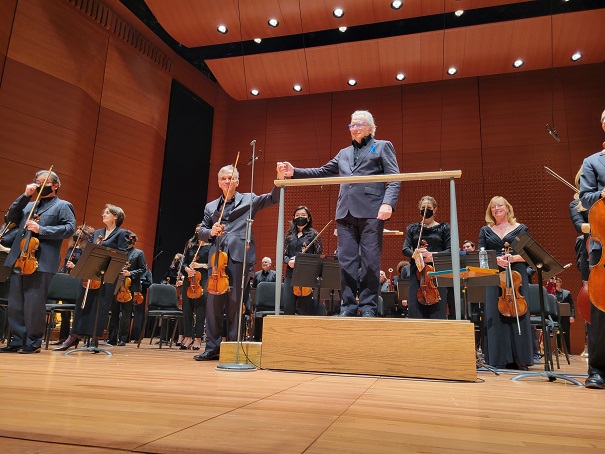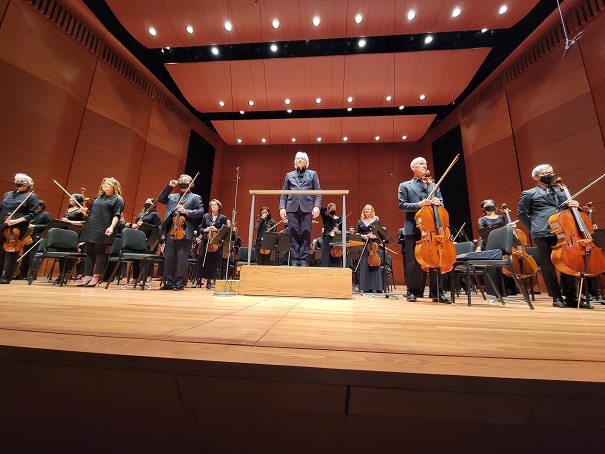Concert Diary: Crawford, Berg, and Beethoven with the New York Philharmonic
November 8, 2021
New York, N.Y.
One appeal of this past Friday afternoon’s concert of the New York Philharmonic was seeing the 76-year-old Michael Tilson Thomas conducting the orchestra for the first time in 10 years. But while I was happy that MTT was guiding the orchestra with a sure hand, I was most interested in the program, which consisted of three compositions that in their own way could be termed “revolutionary.”
The concert began with the orchestra reduced to strings only to play Ruth Crawford’s Andante for Strings, which is a 1938 orchestration of the third movement of her 1931 String Quartet. This piece is only 3½ minutes long, but defines its own place in music history. Crawford notated the strings in the score to increase in volume and then subside in a type of contrapuntal interaction, which overall creates an wonderful undulating texture that was quite unusual for the time, and still sounds quite modern and quite beautiful.
The strings were joined by woodwinds, brass, and percussion and violinist Gil Shaham for the Violin Concerto of Alban Berg. Of all the avant-garde composers of the early 20th century, Berg is the one whose music sounds most traditional. His Violin Concerto is inscribed “To the Memory of An Angel,” the angel being the 18-year-old Manon Gropius — daughter of architect Walter Gropius and Alma Mahler — who died of polio in 1935. Berg composed the work in record time (for him), interrupting work on his opera Lulu and dying himself on Christmas Eve of that same year. While the first of the two movements is often lyrical and finds time for Mahlerian dances, the second movement becomes more dramatic and emotionally wrenching. Towards the end, the music seems to jump back two centuries in time when Berg uses a Bach chorale for a theme and variations, suggesting a concept of continuity and change that applies not only to music but human lives as well. I hear a lullaby in there after the chorale, and I don’t think there’s a violin concerto in existence that has a more gorgeous ending.
Playing from memory with exquisite precision and commitment, Gil Shaham was fun to watch as he moved around a bit. Here are Shaham and Michael Tilson Thomas during curtain calls:
I would have been happy going home at this point, perfectly satisfied I had gotten my money’s worth. But there was another composition on the program: Beethoven’s Symphony No. 3, the Eroica, played by Michael Tilson Thomas and the New York Philharmonic in a dazzling performance of great clarity and power.
It could be said that Beethoven was born not in 1770 but with the first performances of this symphony in 1804 and 1805. This is a work of great passion and heroism, originally intended to be dedicated to Napoleon, but it is Beethoven himself who emerges as the real hero of the Enlightement, with the audacity to create this work of unprecedented length, unrelenting power, and abounding in invention.
Here are Michael Tilson Thomas and the New York Philharmonic during curtain calls, but I regret most of all missing the shot when MTT picked up the score of the symphony and hugged it to his chest:

